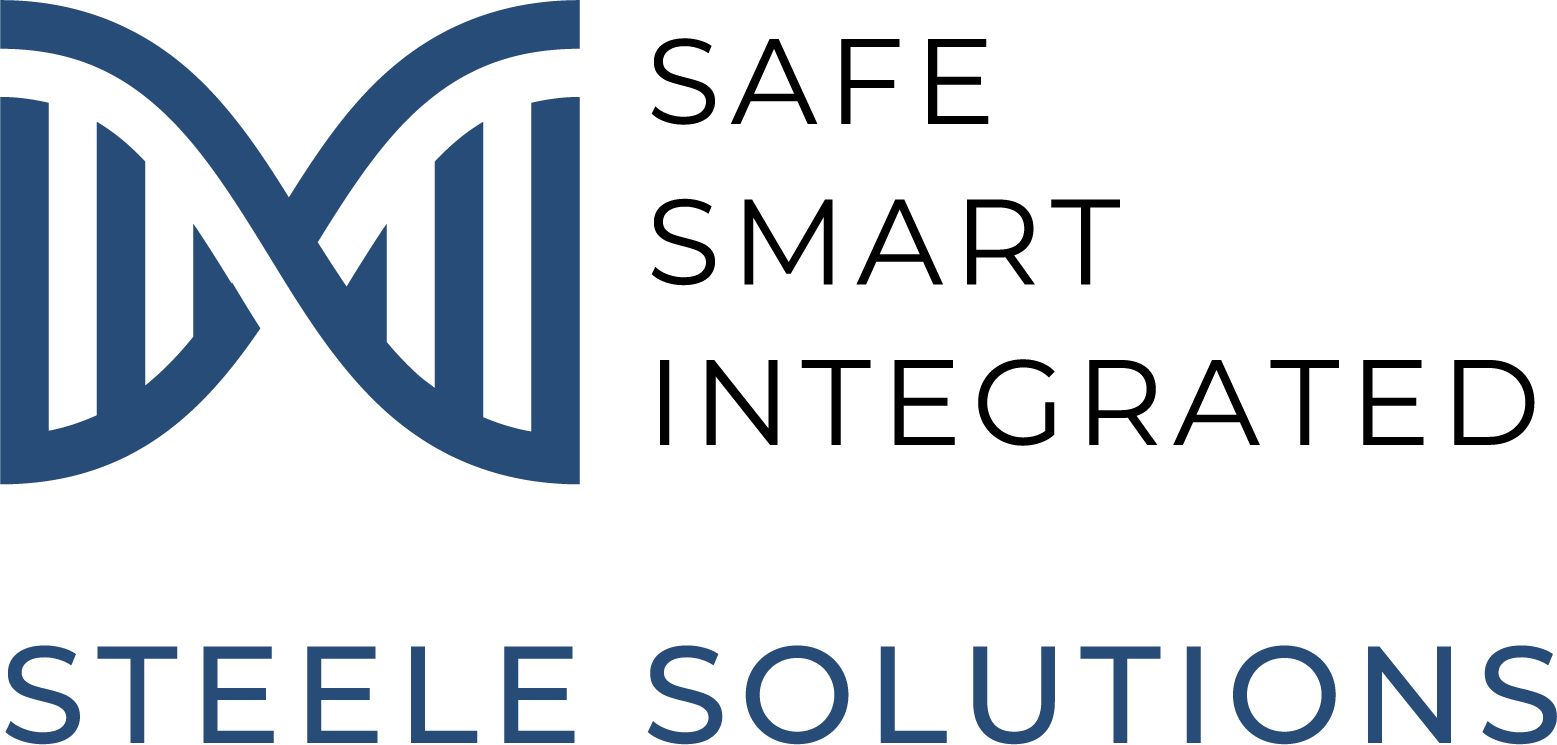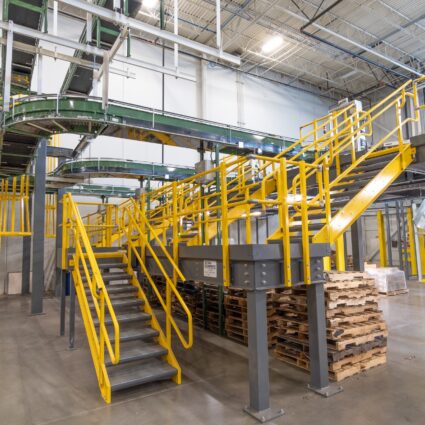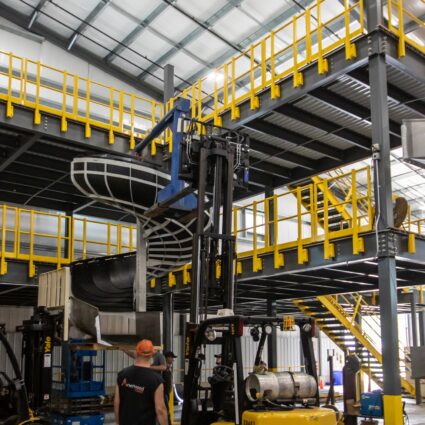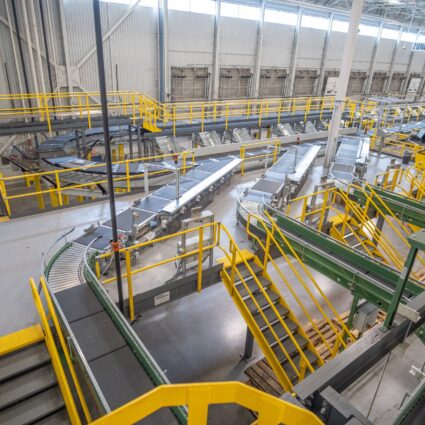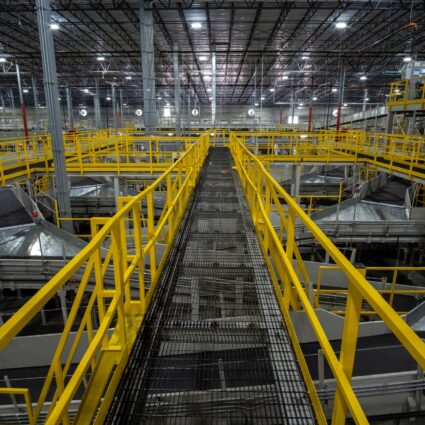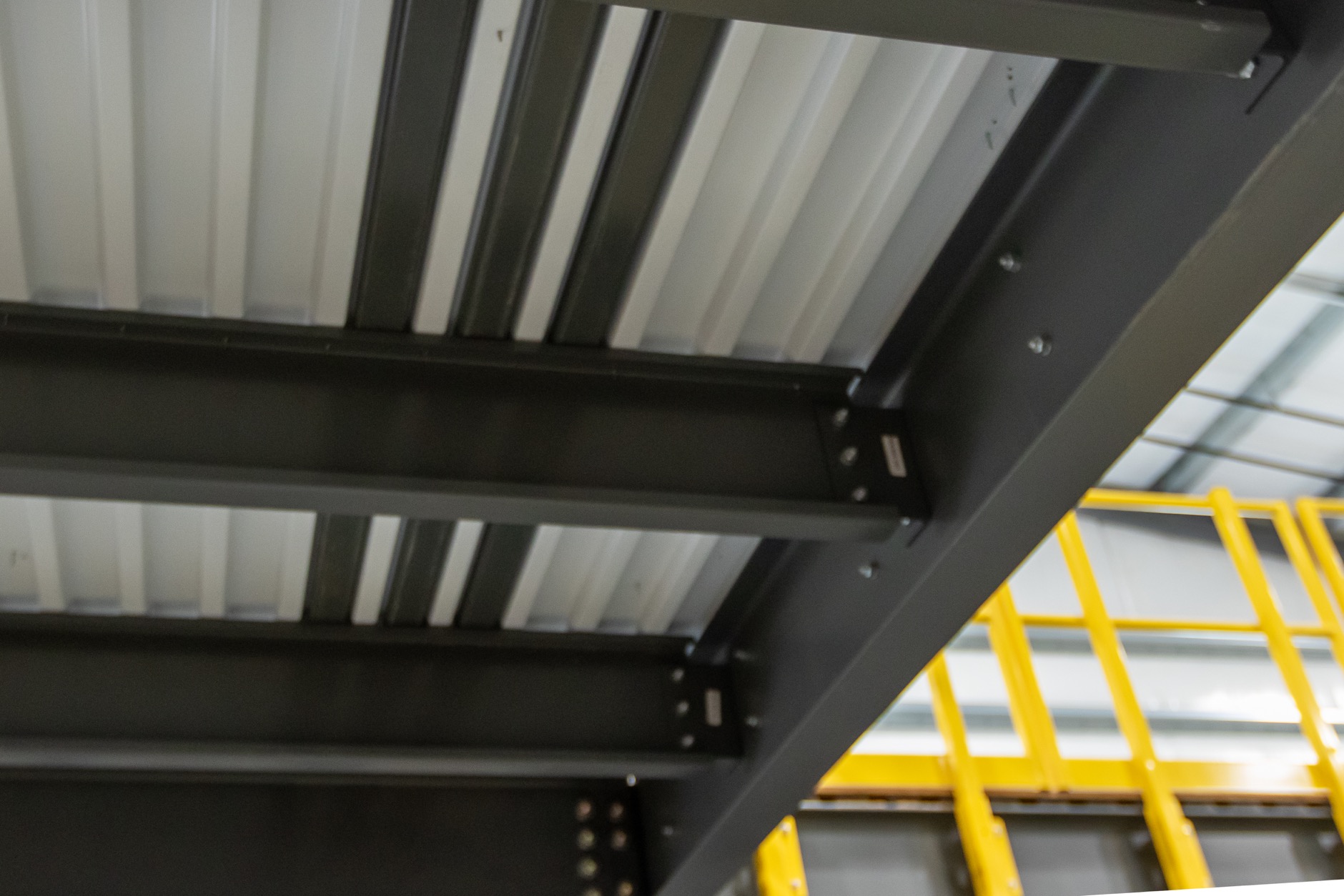
Framing Members and Framing Schemes
by Kevin O’Neill
SSI offers most, if not all, options for structural steel framing members for the design of equipment platforms. Every framing member type has its advantages and limitations, and this discussion will highlight some of the benefits and drawbacks. Structural steel platforms have three common member types: beams, columns, and bracing. Beams can be grouped into joist members and girder members, depending on their primary purpose or function. Joists primarily support decking and span between girder members, whereas girder members are larger and support the joists.
The first framing member type and the most common structural steel framing member is the wide flange (WF) shape. The traditional name or common vernacular is “I-beam,” but its trade name is the wide flange beam in the modern structural steel world. These double-symmetric members are optimized in design for flexure and shear but have limitations for axial loading. For these reasons, WF shapes are commonly used for beams, joists, and girders. They vary in depth (4” to 44”) and width (4” to 18”), and connections to beam or columns are very efficient with the I-shape they are rolled in.
The second framing type is channel shapes. These members are traditionally used as joists or small girders, but the single-symmetric shape and flat side are commonly used to frame out openings or edges of platforms. The strength to weight ratio compared to WF shapes is much less and has limited depth possibilities (max 15”) but can be helpful in small spans with the access to make installing connections much more manageable. Channel shapes are prevalent for stair stringers since connecting treads is simplified, and they will not present tripping hazards with the flanges directed away from the stair walkways.
The third framing type is tube shapes. Tube sizes are used for many reasons on SSI platforms and are typically used for columns and railing. When used for columns, hollow structural steel (HSS) square shapes are preferred due to their excellent properties for axial loading and more common availability in the steel market than circular shapes. HSS columns commonly range in footprint from 4”x4” to 14”x14”.
The railing uses square or round pipe since it is preferred for easy gripping when walking up and down stairs or ramps and provides better resistance for fall protection than flat or angle shapes, especially with the loading possible in multiple directions.
Tube shapes are excellent members to use for columns and railing but have limitations for connections as you need to bolt fully through both walls of the shape if connections are near the middle of the members, and typically welding plates is required. On most SSI projects, HSS columns may be the only members that require weld for both base plates and beam connections.
The fourth framing type is angle shapes. Angles are typically used for bracing or bridging members. Still, recent studies and testing by the American Institute of Steel Construction (AISC) have provided more guidance and analysis to use as flexural members such as joists. The most significant benefit of using angles is the ease of production as there is widely available equipment to process angle steel efficiently with typically one machine.
The last primary framing type provided by SSI is C-sections. Unlike the member mentioned above types that are hot-rolled shapes, as they are formed and rolled in commonly documented profiles, C-sections are formed from flat sheet steel and referred to as cold-formed steel.
Cold-formed steel can be provided in many different configurations and dimensions. SSI provides cold-formed steel members in c shape sections that are either 12” or 8” deep. These are limited in length by both capacity and forming capability but are very efficient members for joists or infill beams less than 20’ in length.
However, due to the thin material used, typically, the connection capacity controls the usage and design of the members.
Many different framing members are possible for steel platforms, and each has its benefit for an application of your choosing. Consult your SSI sales representative or engineer to determine what framing type or scheme would be the best fit for your use.
